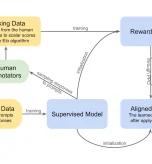Social listening itself is not a new concept, but social media listening was born in the 21st century. Over half the world’s population use social media,with trillions of bytes of information being created each and every day. It’s a vast and tremendous resource – social media listening is one way to access it.
The principle behind social media listening is simple – it involves tracking social media channels for brand mentions and associated or otherwise useful keywords, as well as surveying content for increases in engagement and interactions.
Text can be analysed using natural language processing (NLP) to uncover sentiments and meaning with minimal manual handling and processing.
This enables businesses and organisations to monitor social conversations relevant to them at scale to gain insights across a huge network of social media users.
Understanding Customers with Social Media Listening
Social media listening has been largely enabled by the progression of NLP algorithms which can now process multiple channels of real-time social media data at vast scale.
Whilst it was previously possible to manually analyse social media for specific brand mentions or branded keywords, NLP automates this task across various social media channels.
Advancements in NLP such as Named Entity Recognition (NER) have made auto-locating brand and product mentions from real-time data much simpler.
Some uses of social media listening include:
Responding to Viral Content and Positive Brand Mentions
One excellent example here is Ocean Spray who followed a viral video that involved someone skateboarding whilst drinking their cranberry juice and listening to Fleetwood Mac. This video didn’t mention Ocean Spray, not by hashtag nor in the caption, but followers might have mentioned the brand in the comments.
Ocean Spray delivered the creator of the viral video a red truck filled with a massive supply of Ocean Spray, reportedly within just 36 hours, which highlights how they were listening in to the viral development, even despite there being no explicit mentions of the brand in the initial post.
In this respect, social media listening allows brands to build social proof – proof that their products are being used and engaged with by others. This also allows brands to demonstrate their connectivity with contemporary trends.

Discovering Buyer Personas
Buyer persona analysis and segmentation are augmented by social media listening by delving into brand and product affinity, mutually shared topics, values and demographics. This greatly assists in the creation of targeted advertising strategies whilst also enabling brands to tune and optimise their content types and hashtag usage to appeal to their likely buyer personas.
Social media listening with NLP also enables brands to react to potential risks, e.g. criticisms levied by their personas against similar brands and products.
Responding to Negative Brand and Product Mentions
Responding to negative brand mentions and coverage is equally important. Sometimes, negative press is indirectly linked to a brand where the brand itself is not at fault. Social media listening allows businesses and organisations to monitor and react to emerging negative sentiments before they cause damage.
For example, Senator David Perdue was incorrectly associated with the brand Perdue Chicken after he was aired directing contemptuous or disrespectful remarks towards Kamala Harris. Social media listening enabled Perdue Chicken to quickly extinguish these false associations.
Competitor Analysis
Social media listening is not just useful for analysing mentions of one’s own brand or organisation, but for analysing mentions of similar brands or competitors. Social media listening is used as a type of business intelligence used to gain insight into what social media users are discussing within a particular industry or sector.
Measuring the social share of voice in a particular industry or sector allows brands to discover how many users are talking about them vs their competitors. Tracking social media product launches, releases and marketing campaigns enables brands to launch their own counter-measures.
When Social Media Listening Goes Wrong
There are plenty of examples of where brands come under criticism from their customers following poorly implemented social media campaigns.
Kraft once created a campaign on National Noodle Day entitled ‘Sendnoods’ which resulted in heavy backlash from their primarily family-oriented social media followers. Social media listening allows brands to rapidly address these sorts of ‘human errors’ before the cumulative damage becomes more serious.

Summary: How to Understand Your Customer Through Social Media Listening
Social media listening has developed considerably to become faster, more accurate and more able to deal with different content types across multiple social media channels at scale. It helps businesses track positive and negative coverage, analyse competitors, respond to risks and stay up to date with social, environmental and cultural trends.
Aya Data provides NLP services aimed at making sense of social media data. By combining advanced Named Entity Recognition with sentiment analysis, NLP algorithms can accurately derive relevant business information from real-time social media data.






